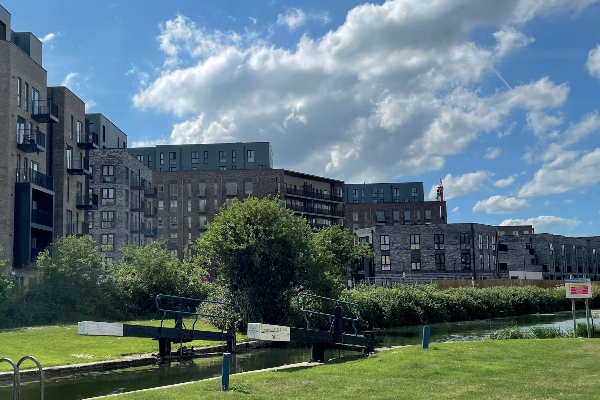Chelmsford’s city status has led to greater investment in new homes – but planning authorities must not rest on their laurels if they want to tackle concerns around affordability, according to a new report.
The research has been released by property advisors Savills to mark the 10-year anniversary of Chelmsford becoming a city.
The report says the number of new homes being built in the city has increased in the last decade – with more than 6,000 also in the planning pipeline.
However, with house prices also rising by 70 per cent over the same period, more homes will be needed if buyers are not to be priced out of the market.
James Firth, head of planning at Savills Chelmsford, said: “Along with the rejuvenation of key parts of the city centre, one area where we have seen some of the biggest change has been in the provision of new homes.
“Between 2011-2014 delivery was significantly below need, averaging just 311 homes per year. But over the past five years, net additional dwellings averaged 985 homes per year, well above the adopted local plan target of 805 homes.
“Much of this delivery has been driven by three large edge-of-town schemes – Beaulieu, Channels Village and St Luke’s Park in Wickford. But there have been some major urban developments too, such as Watson Heights, the redevelopment of the Marconi site and London House, near Essex cricket ground.
“However, the city’s planning committee cannot rest on its laurels. Our research has shown that in the 10 years since becoming a city house prices have risen by 70 per cent – outpacing the national average and stretching affordability for buyers.”
According to Savills, by the end of 2021 the average house price in Chelmsford had hit £428,000 – making property within the city £33,000 more expensive than the Essex average.
The report says that steps are being taken to address this – with some 3,800 properties having full planning consent or currently under construction and a further 2,250 homes in the early stages of the planning process.
Future growth is most likely to be focused around the northern edge of the city where it is supported by new infrastructure, the report says.
A new station is set to be built at Beaulieu Park by 2025, providing more frequent links into London, and upgrades to the Great Eastern Mainline are expected to increase rail capacity. Funding has also been received from the Housing Infrastructure Fund to develop the North East Bypass. These improvements are expected to support the development of over 14,000 homes in the Chelmsford to Braintree corridor.
Another consequence of the squeeze on affordability has been the growth of the city’s rental market. Two purpose-built Build to Rent projects are already underway – a 466 home scheme by Taylor Wimpey at Chelmer Waterside and Seven Capital’s Glebe Road scheme, which has planning permission for a further 197 homes.
Andy Redman, who leads the development team at Savills Chelmsford, said: “If even half of the homes planned were constructed in the next five years, it would represent roughly a doubling of Chelmsford’s delivery rate since becoming a city. The end of the Help to Buy scheme in April next year – which since it began has supported roughly 20 per cent of Chelmsford’s new-build sales – will also likely increase demand for high-quality rental stock.
“The success of Chelmsford as a city has required innovative leadership, cooperation and an entrepreneurial spirit across all those involved in development. This has been very much in evidence in the last decade – but more will need to be done if issues around the growing unaffordability of homes are to be addressed. Not only will new sites for development have to be identified but there will also need to be a mix of properties of all types and tenures to meet demand.”
The full report can be found here.
Image source: Savills
© Eastern Echo (powered by ukpropertyforums.com).
Sign up to receive your free bi-weekly Eastern Echo journal here.










